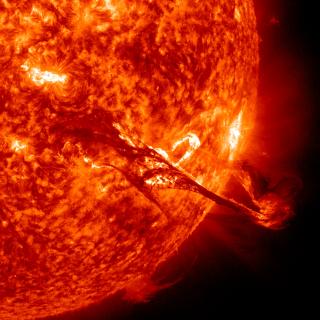Bibcode
Quintero Noda, C.; Uitenbroek, H.; Carlsson, M.; Orozco Suárez, D.; Katsukawa, Y.; Shimizu, T.; Ruiz Cobo, B.; Kubo, M.; Oba, T.; Kawabata, Y.; Hasegawa, T.; Ichimoto, K.; Anan, T.; Suematsu, Y.
Bibliographical reference
Monthly Notices of the Royal Astronomical Society, Volume 481, Issue 4, p.5675-5686
Advertised on:
12
2018
Citations
14
Refereed citations
14
Description
The next generation of solar observatories aim to understand the
magnetism of the solar chromosphere. Therefore, it is crucial to
understand the polarimetric signatures of chromospheric spectral lines.
For this purpose, we here examine the suitability of the three
Fraunhofer Mg I b1, b2, and b4 lines at
5183.6, 5172.7, and 5167.3 Å, respectively. We start by describing
a simplified atomic model of only six levels and three line transitions
for computing the atomic populations of the 3p-4s (multiplet number 2)
levels involved in the Mg I b line transitions assuming non-local
thermodynamic conditions and considering only the Zeeman effect using
the field-free approximation. We test this simplified atom against more
complex ones finding that, although there are differences in the
computed profiles, they are small compared with the advantages provided
by the simple atom in terms of speed and robustness. After comparing the
three Mg I lines, we conclude that the most capable one is the
b2 line as b1 forms at similar heights and always
shows weaker polarization signals, while b4 is severely
blended with photospheric lines. We also compare Mg I b2 with
the K I D1 and Ca II 8542 Å lines finding that the
former is sensitive to the atmospheric parameters at heights that are in
between those covered by the latter two lines. This makes Mg I
b2 an excellent candidate for future multiline observations
that aim to seamlessly infer the thermal and magnetic properties of
different features in the lower solar atmosphere.
Related projects

Solar and Stellar Magnetism
Magnetic fields are at the base of star formation and stellar structure and evolution. When stars are born, magnetic fields brake the rotation during the collapse of the mollecular cloud. In the end of the life of a star, magnetic fields can play a key role in the form of the strong winds that lead to the last stages of stellar evolution. During
Tobías
Felipe García